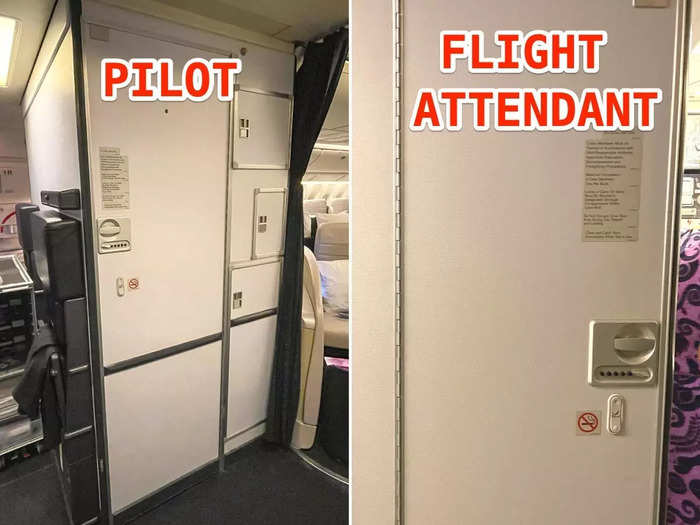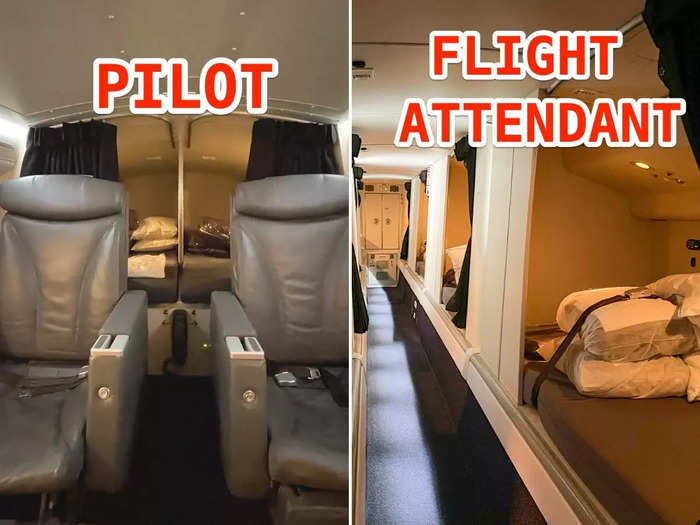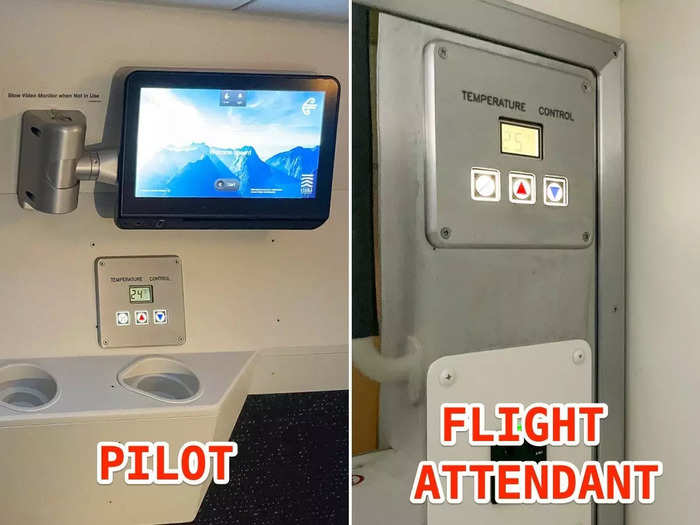Side-by-side images of the rest area for pilots and flight attendants on an Air New Zealand Boeing 777-300ER.Monica Humphries/Insider
- On a long-haul Air New Zealand flight, I saw the secret rooms where pilots and flight attendants rest.
- The Boeing 777-300ER had a room with two beds for pilots and an eight-bed area for flight attendants.
From applying and getting hired to working on 12-plus-hour flights, many elements of a flight attendant's and pilot's jobs are elusive.
But last summer, I had one of those secrets revealed to me.
Before a 12-hour Air New Zealand flight from Auckland, New Zealand, to Los Angeles, California, I stepped inside the secret rooms where flight attendants and pilots rest on long-haul flights.
While there were plenty of differences between the two rooms, three things surprised me. Take a look.
I was shocked to discover just how hidden the rooms are. I've probably walked by them dozens of times.
Side-by-side images of the doors to the hidden bedrooms. Monica Humphries/Insider
Both flight attendants and pilots have legally mandated rest breaks during long-haul flights, a representative for Air New Zealand previously told Insider. These breaks happen in shifts and take place in hidden rooms on an airplane.
For the Boeing 777-300ER, the two rooms are above the passengers. The room for pilots is located at the front of the plane, and the room for flight attendants is at the back of the aircraft.
While I knew the rooms were hidden, I was shocked when the airline's cabin manager approached a wall in the galley of the plane.
It looked just like the rest of the cabinets and storage in the galley. The door wasn't labeled and was camouflaged seamlessly with the rest of the area.
The flight's cabin manager, who was taking me on a tour, punched in a code, and the door popped open.
I've been on a handful of long-haul flights and never realized that I was walking by these secret rooms.
The cabin manager said that's the goal. The resting pilots and flight attendants don't want passengers interrupting their rest or getting into areas they shouldn't be exploring.
The differences between the two rooms were also surprising.
Side-by-side images of the rest area for pilots and flight attendants on an Air New Zealand Boeing 777-300ER. Monica Humphries/Insider
I expected pilots and flight attendants to have similar spaces, but that wasn't the case.
In the hidden space for pilots, which could accommodate two people, there were more amenities. Pilots had both a bed and recliner to rest in, as well as more storage space, TVs, and tray tables.
In the room designated for flight attendants, there was less space per person. The room could fit eight flight attendants, but each flight attendant only had a bed. They also didn't have amenities like a TV or tray table.
I discovered that the rooms are bare on purpose.
Both hidden rest areas allow the pilots and flight attendants to control the temperature in the room Monica Humphries/Insider
Compared to a break room for a teacher or office worker, the rest areas on the plane were largely bare.
Beyond the bedding, a telephone for emergencies, temperature controls, small storage compartments, and the pilots' TVs, there weren't many other amenities.
The cabin manager told me that was the point.
The purpose of the rooms is to rest, so they're intentionally lacking features that would prevent that. Instead, heavy curtains help drown out the noise, and the rooms are dimly lit so everyone inside can get some sleep.
This initially surprised me, but once I thought about it, it made sense. These flight attendants and pilots need to be prepared — and rested — if any emergencies were to arise.



